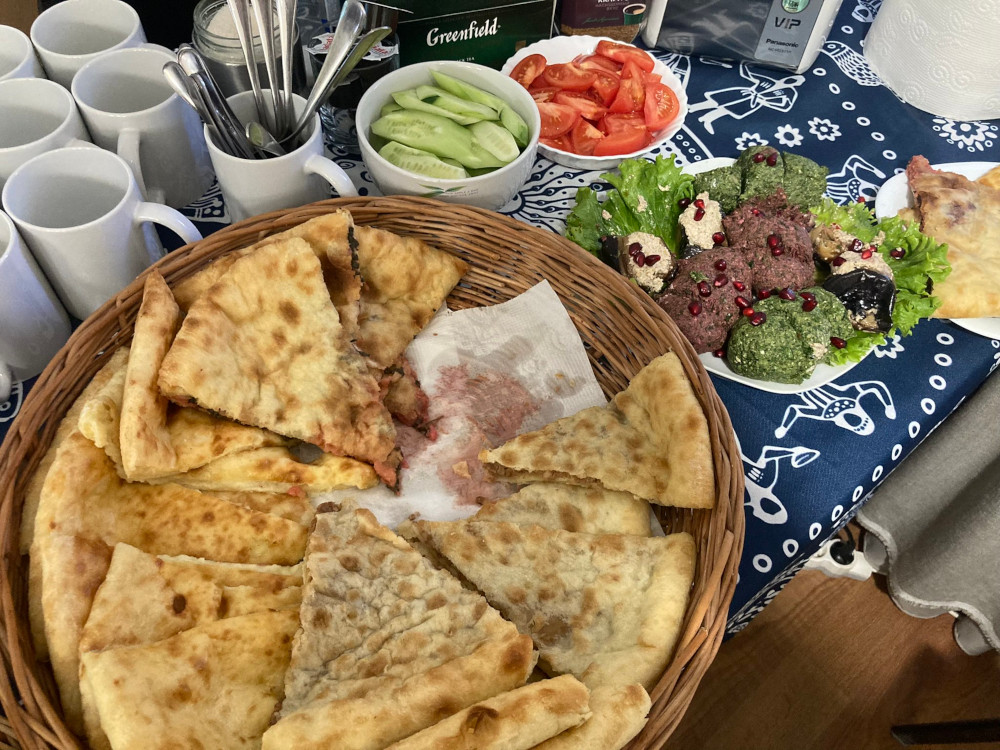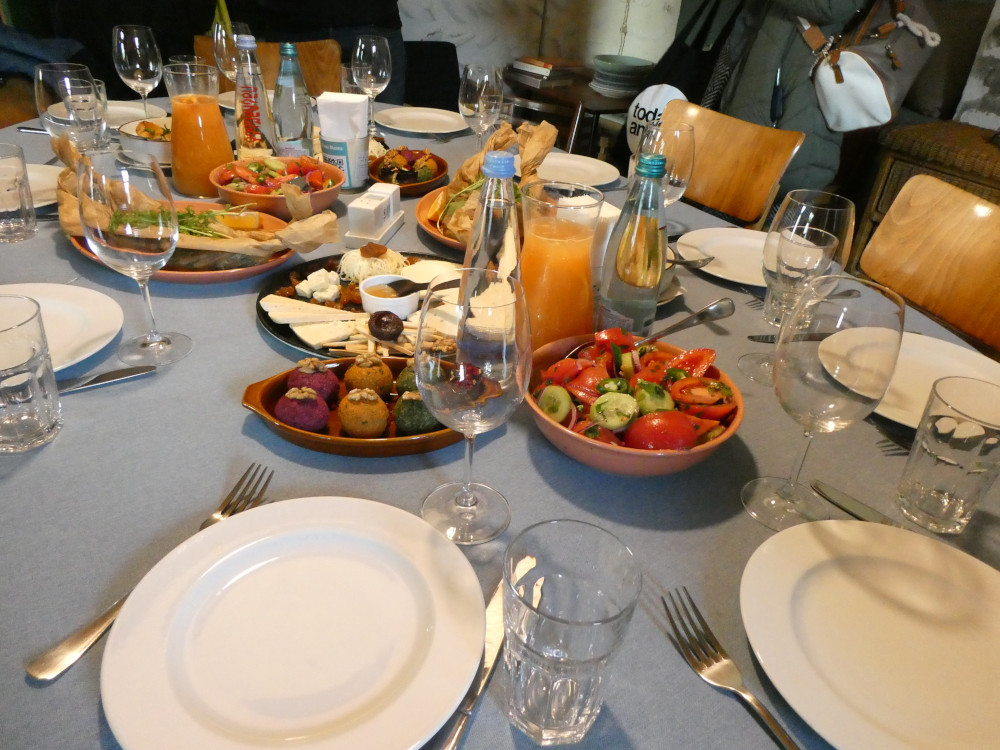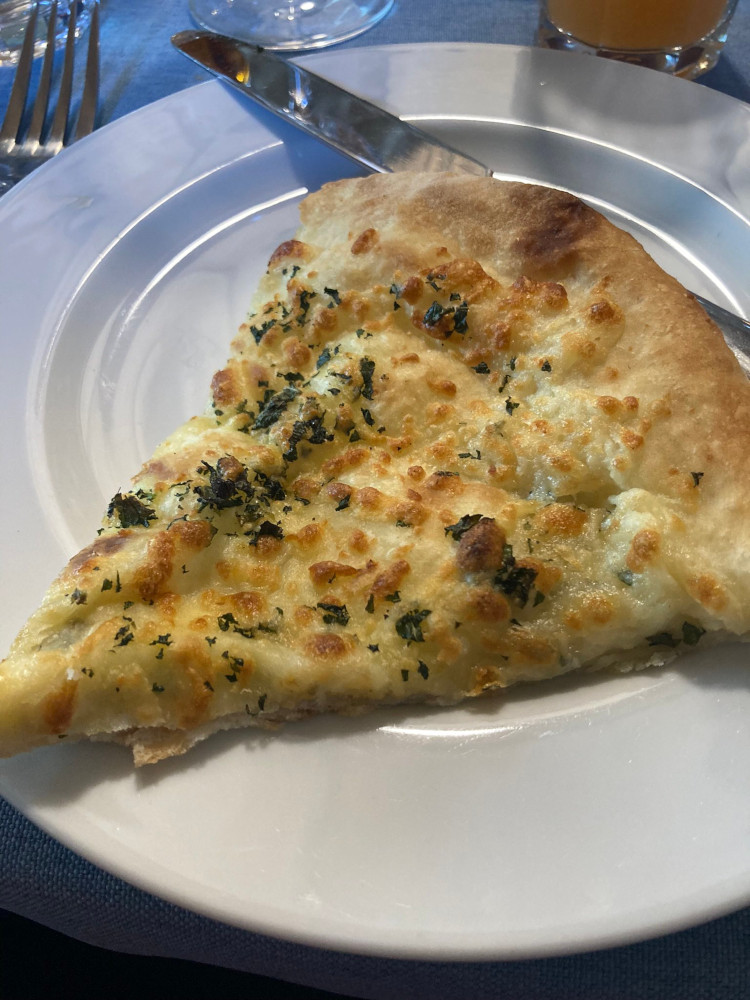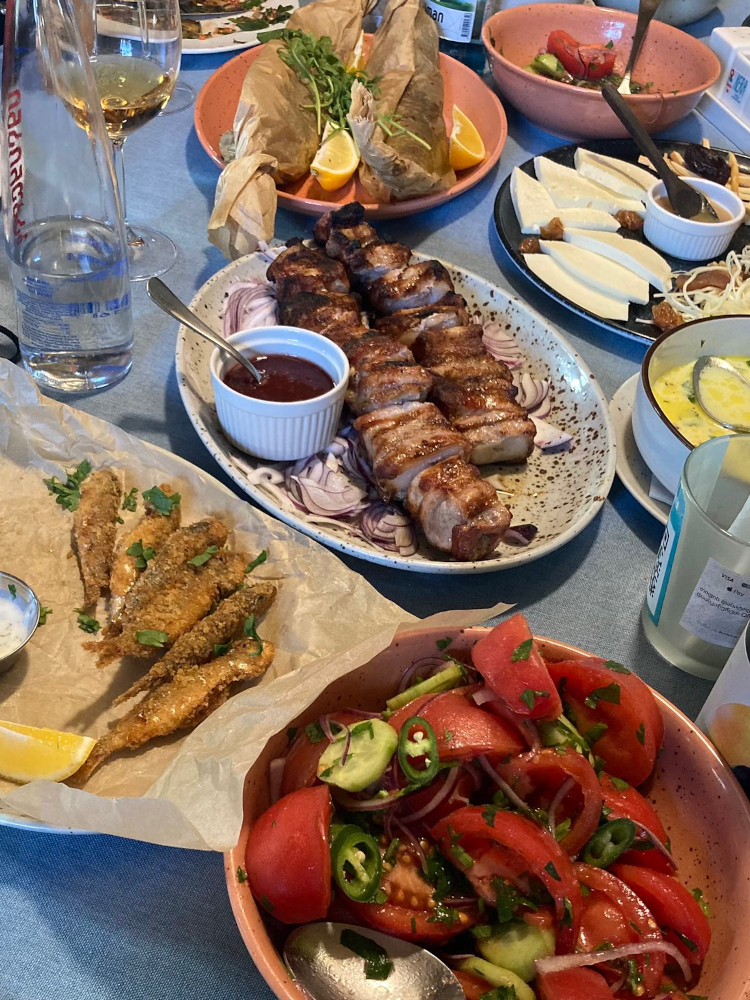If there’s one thing the Georgian Tourist Board seemed determined we learn about their country, it’s that it’s a foodies paradise. This is a real if you know, you know thing. If you’ve been to Georgia, you’ll probably list it as one of the best countries for food on the planet. If you haven’t been there, it just won’t occur to you that they do food really well.

Every single tour featured a long lunch stop – if you got through it in two hours, that was a quick lunch. This isn’t the sort of food Georgians eat every day – this isn’t what your average Georgian worker would have for lunch on an ordinary day, or even on a less ordinary day. This was a supra and it’s more akin to a wedding feast or something of that level of occasion. That said, some of the dishes that made up the supra are more ordinary everyday foods. It’s when they’re combined with eleven other dishes that it becomes a feast.

My enamel workshop and trip to Uplistsikhe both featured a supra at Kera, a riverside fish restaurant in Mtskheta, despite the fact that at the enamel workshop, we thought we’d already had lunch. The first time, we all gathered around the big table and ooh’d and aah’d at the variety and amount of food and took photos, little suspecting there were still at least six dishes to come. We had plates piled on a smaller table behind us and still had new dishes balanced precariously on half-eaten ones. On neither day did we manage half of what was laid out in front of us.


For me, a person with a congenital selective eating disorder, big meals are something I’ll go a long way out of my way to avoid. I can’t eat them and I get really tired of the interrogation from everyone else about why. But first, the Traverse crowd did nothing of the sort and second, I found a beloved national dish that I can actually eat! Georgia’s most famous export – well, my boss mentioned it when I told him where I was going so it’s known at least a little bit beyond the Caucusus- is khachapuri. The version I had become aware of is a kind of boat-shaped bread, filled with cheese and topped with an egg. Eventually I learned that this is Adjarian khachapuri. What Kera serves is Imeretian or Imerian or Imeruli khachapuri, which is kind of like a cheese and herb pizza, no tomato sauce, if the cheese was baked inside the bread rather than scattered on top. Perhaps it’s not the kind of cheese I’d choose to stuff in my bread at home but it’s certainly inspired me to think about a Wessexian khachapuri.


I also had plain bread. Some of the culinary tours seem to have done some breadmaking and I gather that these long, slightly soft thin baguette- shaped loaves are cooked by flattening them onto the curved brick interior of a wood-fired oven. I’ve not been to the US and eaten at Olive Garden but they kind of look like the “breadsticks” of the “stuffing breadsticks into my purse” meme.
Elsewhere on the table we had “the Royal dish”, aka shkmeruli. Many years ago, a king was visiting someone and they had no food to offer except some past- its-best chicken. So they cooked this food poisoning hazard in a kind of thin stew with lots of garlic and spices and cream to disguise that the chicken was off. Now, of course, it’s fresh and safe chicken but it’s still cooked in enough garlic to smell it in the next room and the sauce is an alarmingly radioactive shade of yellow.
A popular dish was pkhali, a dish of golf ball-sized – well, balls, in green, pink and light yellow. These are a vegetable and walnut paste, often featuring spinach or beetroot and garnished with pomegranate seeds. I think most people ate it as it was but it seems it’s really supposed to be spread on things – the bread, perhaps!
We had a plate of cheese and honey and walnuts. One of the cheeses was cut into matchsticks and resembled some kind of dried meat but I think we eventually concluded that it was cheese. We had fish, probably trout from the river right outside, baked in oil and herbs wrapped in brown paper. The fact that they were cooked whole and still had faces was a bit off-putting for some of the group. We also had a dish of small battered and fried fish, complete with delicate tail fins and a dipping sauce.

What else am I missing? A salad of tomato & cucumber in oil and herbs, and a dish of pan fried vegetables later. Rice, or perhaps couscous, with vegetable jewels dotted in it. A dish of sliced pork with onions and pomegranate sauce that I think is called mcvadi or mtsvadi – this came out last when the people who would have really appreciated it didn’t have space for it. And on the second day we had a dish of potatoes too, which I think takes us to the twelve dishes.

Besides that, we had a couple of bottles of amber wine. If you haven’t read the Old Town post, Georgia is the cradle of wine, with evidence of winemaking here centuries, if not millenia, before anywhere else. Georgian wine is made by fermenting the whole grape – seeds, stalks, skins and all – in a clay vessel that can be several metres tall, called a qvevri, which is sunk into the ground. All those extras mean it has a richer colour and flavour than other wines – white wines tend towards a deeper golden amber colour (although if it’s made in anything other than a qvevri it’s called orange wine rather than amber) and even the reds are darker than their non-Georgian counterparts. Georgia even manages to make some mint-green wines, although Kera stuck to amber.

For the drivers and non-drinkers, there was some kind of citrus juice with slices of grapefruit in. Undoubtedly there was pomegranate too. I’ve concluded that the pomegranate is the national fruit of Georgia, which is why I choose an enamel ring with pomegranates on it as my one souvenir. Then there was a green juice I can’t identify but seems to be their “mint lemonade”. I preferred the citrus but the mint one didn’t have stringy pulp in it, which I dislike. Liquid should be liquid.
We didn’t have dessert. After eating half the entire menu, I don’t think anyone had room. Waffles, ice cream and jam sounds pretty good, though.
And then you find yourself back there 24 hours later, eating it all again!